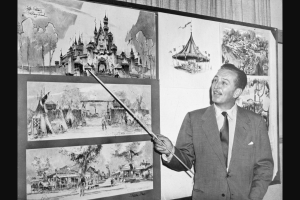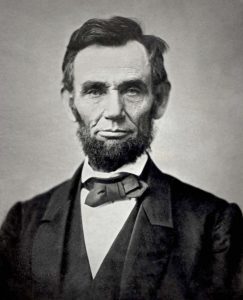In 1942, Sam Walton returned from serving his country as an officer in the U.S. Army Intelligence Corps during World War II. When he returned home, he needed to support his wife and child so he combined a loan of $20,000 from his father-in-law and $5,000 of his own money to start a business expansion of a small variety store in Newport, Arkansas. However, it wasn’t until 1962 that Walton opened the first Walmart store in Rogers, Arkansas. This first store led to the expansion of thousands of other locations around the globe.1
By 1967 Walmart had opened up 24 different stores that were rising to $12.7 million in sales. In 1969 the company officially incorporated as Walmart Stores, Inc.2 Walmart was doing so well that it quickly expanded into different countries, and it became an international business. Walmart now has 4,100 outlets in the United States and 3,100 in thirteen other countries around the world, including Asda in Britain. “Sales were over $374 billion last year (only slightly lower than the GDP of Denmark).”3 By 1976, Walmart became a publicly traded company with share values of more than $176 million. By the early 1990s, Walmart’s stock worth grew to $45 billion.4

When Walmart first began to expand, they set their sights on trying to eliminate their Kmart competition. It turned out to be a great strategic decision. At first, they only had small competition from regional discounters. In 1972 the competition had really just began. Kmart had a store in Hot Springs, Arkansas, which previously had no competition. Their prices and margins were so high that they almost weren’t even discounting their products. Walmart sent Phil Green to open up a store near that Kmart. This store would be known for its outrageous promotions like the large Tide display. The Tide display started because Green worked out a deal to get a dollar off a case if he bought 3,500 cases of a giant- sized box. One source describes, “it made up a pyramid of detergent boxes that ran twelve to eighteen cases high — all the way to the ceiling, and it was 75 or 100 feet long, which took up the whole aisle across the back of the store, and then it was about 12 feet wide so you could hardly get past it.”5 Green cut prices to the bone which led to Kmart losing many customers. This led to Walmart setting up a strategy to make its stores even better and more competitive.6
In 1976 a research group was set up with owners of regional retailers–who at the time didn’t compete in each other’s territories–had their first meeting in Bentonville. All of these sellers from throughout the region went through the Bentonville store to give feedback on what they saw to help the store make some adjustments. With all of the adjustments fixed and sorted out they “pulled [themselves] together and designed a big plan–a promotional program and a people program and a merchandising program.” Since their store in Hot Springs had turned out well they were very confident that they could compete now. This competition taught Kmart a little something about Walmart, and vice versa.7
Then in 1977 Kmart went head to head with Walmart in Little Rock. Kmart got aggressive, and Walmart didn’t back down. Walmart told the manager running that store, “No matter what, don’t let them undersell you at all, on anything.” Kmart got so aggressive that they cut the price on the Crest toothpaste to 6 cents a tube which led to Walmart doing the same thing. Walmart waited for Kmart’s response but nothing happened. Kmart had backed off. Walmart’s aggressiveness continually put pressure on their competitors, bringing Walmart success.8
When Walmart noticed that Kmart went after them in 1976 and 1977, they escalated expansion efforts by buying struggling discounters. In 1977 Walton’s brother Bud and David Glass negotiated a deal that bought a small chain Mohr Value in Illinois. They closed down five of the stores and then they transferred the remaining sixteen into new Walmarts in new territory. By 1979 Walmart had 230 stores opened, and the company hit their first billion dollars in sales.9
In 1983 Walton tried an experiment by opening the first Sam’s Club, a business designed to sell products in bulk to small business owners or people that like buying in bulk. For Sam’s Club, you needed to have a membership card to buy their bulk products. The people that opened up Sam’s Club can’t take credit for the idea of wholesale selling though, but Walton and his crew were the most successful at it.10

Competition could get spirited sometimes, and so Sam Walton went into one of the Price Clubs in San Diego with his tape recorder. He was going through the aisles, making notes about the prices and other merchandising ideas he saw while looking around. A tall guy noticed. He told Sam Walton, “I’m sorry but I’ll have to take your tape recorder and erase the material you’re got on it. We have a policy against people using them in the stores.”11 Walton knew he got caught, so he wanted to make a note to Robert Price that he had other information on the recorder from other stores that he would like back once he was done going through it. Walton got the tape back in about four days or so with all the information on it including the information on Price Club that he recorded.12
Sam Walton was always trying to improve his company, and in 1984, and he had a new bright idea. He switched Jack Shewmaker’s and David Glass’s jobs around so that Shewmaker became the Chief Financial Officer and the Vice-Chairman while Glass became President and Chief Operations Officer.This switch had everyone confused. Sam Walton never talked about why he switched their jobs around, and Shewmaker and Glass never said anything about it either. Surprisingly, after the switch, Walmart set new records. Everyone wondered whether Sam Walton was grooming a successor., which led to a lot of gossip going throughout the company.13
In 1982 Sam Walton developed a form of cancer — hairy cell leukemia. In November 1989 Walton got locked out of his house and climbed up the shoulders of the dog handler, crawling through a small window. The squeeze was a tight one and the dog whistle that was dangling from his neck got caught on the window, and it dig painfully into his sternum. The next day the pain got worse so he flew to see his physician in Houston. Little did he know that would lead to the discovery of another serious health problem, multiple myeloma. Sam Walton died on April 5, 1992.14

Everyone says that competition is a bad thing, but to Sam Walton, competition made his company better, thanks to all the information he gathered and all the changes he made along the way. Competition made him think outside the box to ensure the future of his company. In 2008 Walmart had 7,288 store worldwide and since then has continued to expand. Now, in 2018 Walmart has 11,718 stores worldwide.15 Walmart is doing so well that they have expanded the different services they provide. Walmart expanded to include Walmart neighborhood stores, which are popping up in different neighborhoods around the country. They also expanded their services to online ordering that you could pick up in the store and then later in one of their pick up lanes outside. Competition helped Saw Walton think outside the box which made Walmart very successful until today and beyond.16
- Biography.com, 2014, s.v. “Sam Walton Biography.” ↵
- “Timeline.” Our History, Walmart. https://corporate.walmart.com/our-story/our-history. ↵
- Edemariam Aida, “ It all began in a small store in Arkansas” The Guardian, 2009, https://www.theguardian.com/business/2009/mar/14/wal-mart-us-economy. ↵
- Biography.com, 2014, s.v. “Sam Walton Biography.” ↵
- Jordan Thaeler, “ Why Sam Walton Admits Retailer Inherently Unsophisticated” Medium, May 9, 2017. Accessed September 28, 2018. https://medium.com/@JJThaeler/why-sam-walton-admits-retailers-inherently-unsophisticated-b01a5ed7a9a. ↵
- Sam Walton and John Huey, Sam Walton: Made in America (New York: Doubleday, 1992), 191. ↵
- Sam Walton and John Huey, Sam Walton: Made in America (New York: Doubleday, 1992), 192-193. ↵
- Sam Walton and John Huey, Sam Walton: Made in America (New York: Doubleday, 1992), 193. ↵
- Sam Walton and John Huey, Sam Walton: Made in America (New York: Doubleday, 1992), 196. ↵
- Sam Walton and John Huey, Sam Walton: Made in America (New York: Doubleday, 1992), 199-200. ↵
- Sam Walton and John Huey, Sam Walton: Made in America (New York: Doubleday, 1992), 202. ↵
- Sam Walton and John Huey, Sam Walton: Made in America (New York: Doubleday, 1992), 202. ↵
- Vance H. Trimble, Sam Walton: The Inside story of America’s Richest Man (London; Penguin Group, 1990), 219. ↵
- Vance H. Trimble, Sam Walton: The inside story of America’s Richest Man (London; Penguin Group, 1990), 299-301; Biography.com, 2014, s.v. “Sam Walton Biography.” ↵
- “Total number of Walmart stores worldwide from 2008 to 2018,” Statista, March 2018, https://www.statista.com/statistics/256172/total-number-of-Walmart-stores-worldwide/. ↵
- “Business,” Walmart Today, blog.walmart.com/topics/business. ↵



82 comments
Andrea Laguna
Really interesting article! As a business major, I found extremely interesting how Walmart grew from a small size shop in Roger, Arkansas, to a worldwide recognized shop. It is mesmerizing how in the period of 17 years, Walmart had 230 stores nationwide and hit their first billion dollars in sales. Sam Walton was a competitive guy, and that is why Walmart is worldwide recognize today. I personally learned a lot about this article. Nicely done!
Carlos Cortes
This article was very interesting to read about how the biggest companies in the world today, were at one point a small business, and through success and different obstacles become the massive companies that they are today. This article clearly explains the steps that Walmart took that lead them to so much success and really focused on a single perspective while explaining. That lead them to be clear with their explanations with a clear cause and effect of how Walmart was created and expanded.
Janie Cheverie
This article was so interesting due to how large of a corporation Walmart has become. It was interesting to see how all companies have to start somewhere and even Walmart was a small business at one point. This article was very informative by giving insight into the backstory of the company which is inspiring for others who want to start their own business.
Emilia Caballero Carmona
Hey Alyssa, your article was so interesting because I had never learned about the history of Walmart as a company. I had always thought Walmart always existed, but that is not the case now I know that when Walmart started as a company it did have competitors. I had heard about stores called Kmart but I never knew their relation to Walmart’s history. In addition, it is interesting to learn that the creator of Walmart, also created Sam’s Club, which is also a really important company in the United States.
Nicholas Burch
Although Walmart won the sales war against Kmart, you could argue that both companies gained experience from it and it got everybody talking. Sam Walton did a great job of looking at competitor’s companies and establishing a problem. If he never did this, Walmart wouldn’t be as successful as they are today and customers would miss out on the benefits of wholesale deals. Sam Walton’s innovation even caused other stores to try new things as well. Never stop innovating because competition can make everyone better.
Lesley Martinez
It’s so interesting to read about the background of such a huge company and its founder, Sam Walton. I had no idea that there were 3,100 outlets in thirteen other countries. The strategic decision to eliminate Kmart seemed to have worked as we have seen that the last few Kmart’s have gone out of business. This article demonstrates several ways that companies, such as Walmart, that are trying to grow and the means they have to meet to reach those ends. Great article!
Marco Montes de Oca
This article was very interesting and well written. Walmart today, is one of the biggest companies and most well known businesses in the United States. Many people don’t think about these big corporations started but this article gives us great insight into how it happened. It was really interesting reading how this business grew after Walton started it in Rogers, Arkansas.
Ashley Martinez
I found this article extremely interesting to read about. Everywhere corner you turn around it seems as though there is Walmart there. It was neat to learn about the very successful company that we all shop at very frequently. Sam Walton was an excellent business man and was extremely competitive. Without his competitive nature Walmart may not have become the successful business it is to this day. It is neat that he also created Sam’s Club! This was a very informative article that was well written.
Sebastian Portilla
The Walton family is one of the richest families in the U.S. Their business is growing every second. The big picture is that they make 4 million an hour, and their workers get paid minimum wage with no benefits. The workers are the reason why they profit. Yes they do provide jobs but they provide the minimum basics of a job. They have so much power in doing more for America but decide not to.
James Disrud
This article was very interesting and fascinating to see how Walmart grew. When you think about these big stores you never really think about how they started. It is quite inspiring what Walton did, starting Walmart in Rogers, Arkansas to having stores nationwide across America. This article was informative and very well written it gave a good backround about the history of Walmart and how the store got its start.